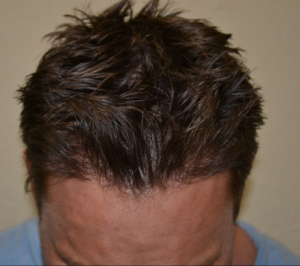By age 50, about 50% of American men—and a substantial number of women—are affected by hair loss, much of which is hereditary. Patients with severe hair loss may require surgery to restore hair loss and promote new hair growth. Hair Transplantation is designed to produce effective results with minimal downtime and no damage to surrounding hair follicles. Dr. Bishara is highly experienced in performing all of these procedures, and will help you determine which one is right for you in order to achieve the best possible results.Surgical Treatments
Follicular Unit Transplantation (FUT)
FUT is a method of hair restoration surgery in which hair is transplanted only as natural, individual follicular units. This ensures that patients will achieve the most natural results and also allows Dr. Bishara to transplant the maximum amount of hair into a small area. These follicular units consist of up to four individual hairs in each follicle. Hair growth typically begins about three months after the FUT procedure.
Total Crown Renewal® (Frechet Triple Flap)
Total Crown Renewal® is the only procedure that effectively treats the entire top and back of the scalp by redistributing 12,000-15,000 hairs over the balding area. This creates a natural appearance even when treating large areas of baldness on the front, top and crown of the head.
This procedure is performed under local anesthesia on an outpatient basis. Patients usually experience little to no discomfort during this procedure, and can return to their regular activities after three days.
Temporal Peaks Restoration
Temporal Peaks Restoration restores a natural and youthful hairline by recreating the temporal peaks, the areas at the front of the head that are common sites of hair loss. Restoration of hair in this area includes transplantation with proper placement to recreate a natural hairline and restore the patient’s original appearance.
Follicular Unit Extraction (FUE)
Follicular Unit Extraction (FUE) is a minimally invasive hair restoration procedure that moves the patient’s own hair graft by graft to maximize the likelihood of regrowth after it has been transplanted in the balding area. This procedure involves moving the entire follicle with special micro-instruments in order to prevent damage and maintain the health of the hair for optimum results. FUE offers many benefits over traditional hair transplant procedures, including: minimal scarring and discomfort and a quick return to work.
More hair restoration information, including Propecia information, is available in our office. Please contact us at 817.473.2120 to schedule an appointment.










